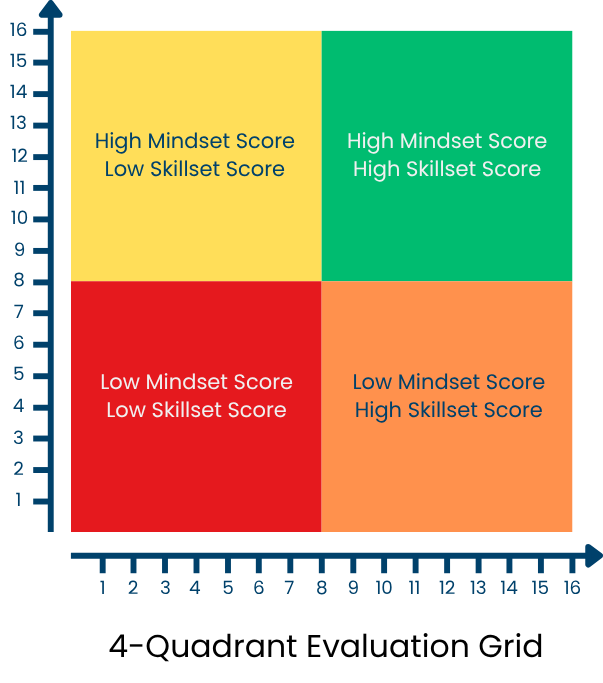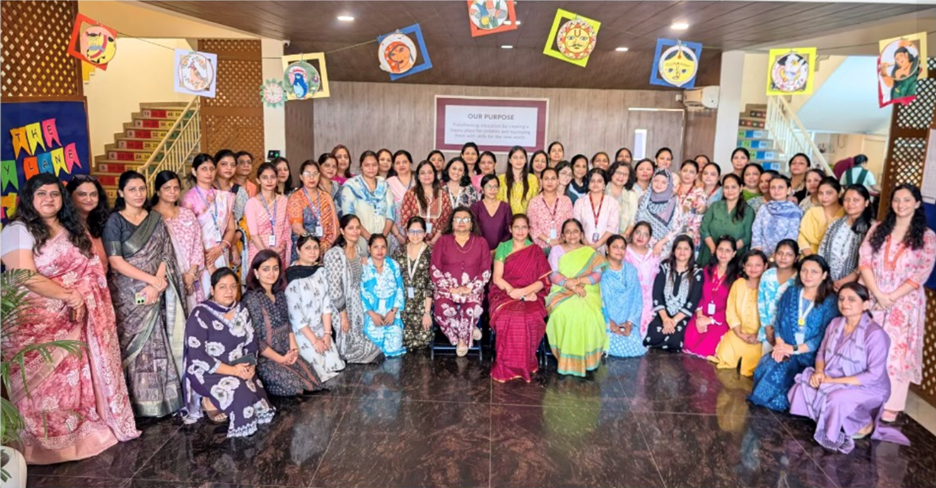At Vega Schools, we see recruitment and retention as inseparable from our core values. Since our founding in 2012, empathy, innovation, excellence, collaboration, and integrity have shaped not only how we teach and lead but also how we hire, evaluate, and develop our people. From the very first step of the hiring process to ongoing performance reviews, our approach ensures that every educator we bring into the community aligns with these values. Whilst we know skills can be taught, it is values that define culture; and culture is what underpins staff and student wellbeing.
Recruitment on a Foundation of Core Values
Our core values were established before we shovelled the initial scoop of dirt for the foundation of our first school. We strongly believe, and still do, that all we do must emanate from a set of core values that we can demonstrate in practice every day and that will drive our purpose, mission, and decision-making from day one forward.
The challenge is to establish a healthy culture where all stakeholders want to be and can grow and thrive. It was imperative to us that we engage with educators who first have a growth mindset and who embody the soft skills that will contribute to shaping a culture that strives to achieve success for all. We see this as an opportunity to think differently about hiring, growing, and retaining the kind of individuals that embrace and exhibit the core values that we established. We place mindset over content every time. We feel that we can support anyone in the development of their content skills and pedagogy, but truly changing someone’s core values or beliefs is a task we cannot undertake.
The Process
“The challenge is to establish a healthy culture where all stakeholders want to be and can grow and thrive.”
During hiring, we use of a set of metrics to determine a candidate’s compatibility with our core values. We feel strongly that if the candidate and our core values are not aligned, then we are setting the candidate and the organisation up for failure.
One of our key tools is the FIRO-B assessment instrument, which helps us understand how comfortable an individual is with certain behaviours. We link these results directly to our values to see how a candidate is likely to act in real situations. Alongside this, we use interviews, scenarios, and lesson delivery to observe how values are demonstrated in practice as well as how candidates apply their subject knowledge. This gives us a rounded picture of each applicant.
Hiring, however, is just the start. To ensure our values remain at the heart of daily practice, we use a four-quadrant evaluation grid.

Source: Vega Schools
The vertical axis represents mindset our core values and growth orientation. The horizontal axis represents content the subject knowledge and pedagogy needed to excel in role. Faculty and staff evaluate themselves against both axes each quarter, while the leadership team conducts a parallel assessment. We then compare scores, and each individual meets with school leaders face-to-face, bringing evidence of how they have lived the values in their work.
The goal is that by the end of the meeting, a consensus is achieved, and an action plan is established for continued growth or to provide coaching support to mitigate areas that need support. Ultimately, at the end of the year, this very transparent process results in determining one’s salary increment or, in some cases, termination.
Although time-consuming, this approach underscores our belief that people are our greatest resource. Investing in their growth and wellbeing ensures that every team member feels valued, supported, and part of a culture where thriving together is the norm.
Sustainability
The above practices have allowed us to fine-tune our hiring and retain a very high percentage of team members from year to year. We measure our success based on both qualitative and quantitative data from internal and external sources to ensure we stay true to our core values. To do this, we must be willing to ask ourselves hard questions that can often be uncomfortable, but we know that it will allow us to grow and stay the course we have charted.
“We believe that human capital is our greatest resource, and cultivating each member of the team contributes … to the overall culture at Vega.”

Source: Vega Schools
Lessons Learned
Based on our journey, we have learned countless lessons; a few of the learnings have resulted in the following recommendations:
- Establish a set of core values that you truly believe in. Some organisations concentrate on widely used terms or concepts, not giving the depth of conversation this requires.
- Develop metrics for hiring to ensure core values are part of the equation.
- Create a process to track your adherence to core values.
- Make use of a third party to assess your culture and adherence to core values.
- Make use of surveys to engage all stakeholders in the process and be transparent with the survey results. For our surveys with younger students (non-readers), we use emojis.
- Consciously include your core values as part of all meetings and gatherings to continue to emphasise their importance to the health and culture of the organisation.
In Summary
Core values define an organisation’s identity and culture, which in turn guide behaviour and decision-making. By hiring and retaining educators whose personal values align with our organisational principles, Vega not only builds a strong, collaborative culture but also fosters the wellbeing of every staff member and student, creating a community where everyone can grow, thrive, and feel supported.
Written by Steven W. Edwards, PhD

Steven W. Edwards, PhD is the Co-Founder of Vega Schools, Gurugram, India.


